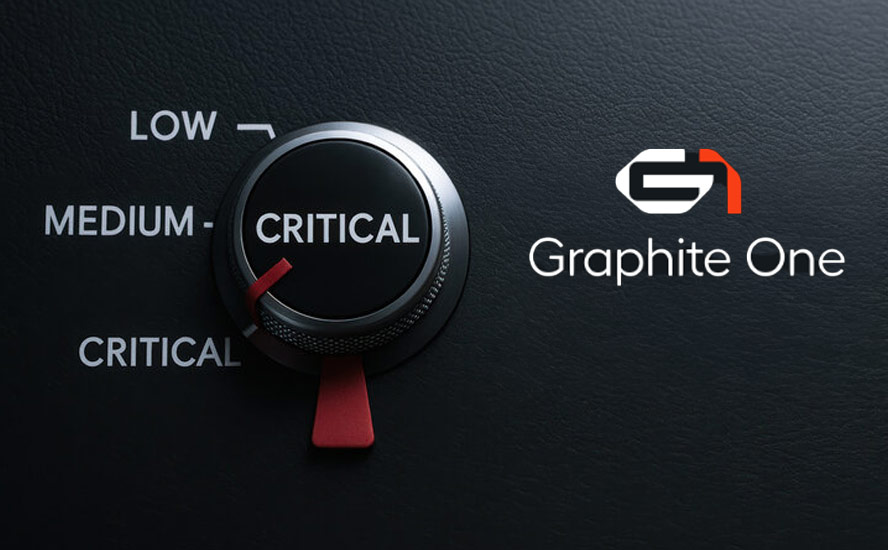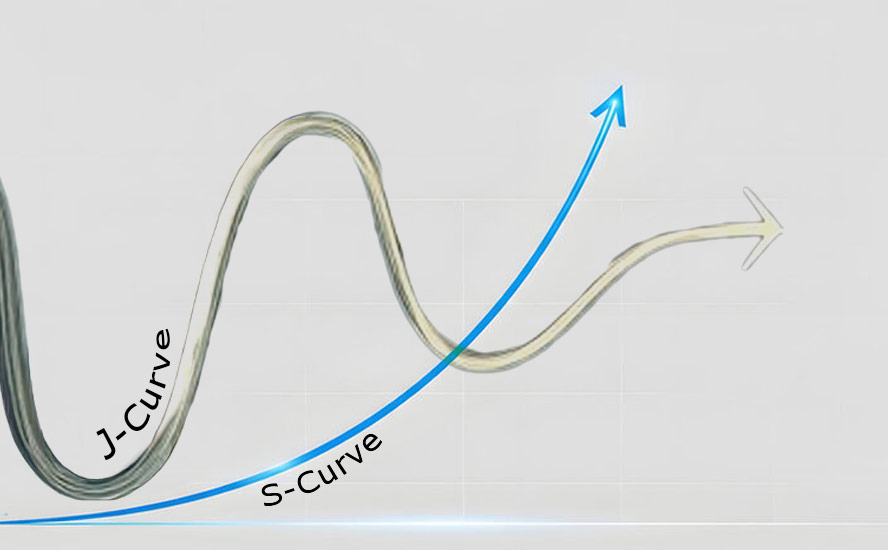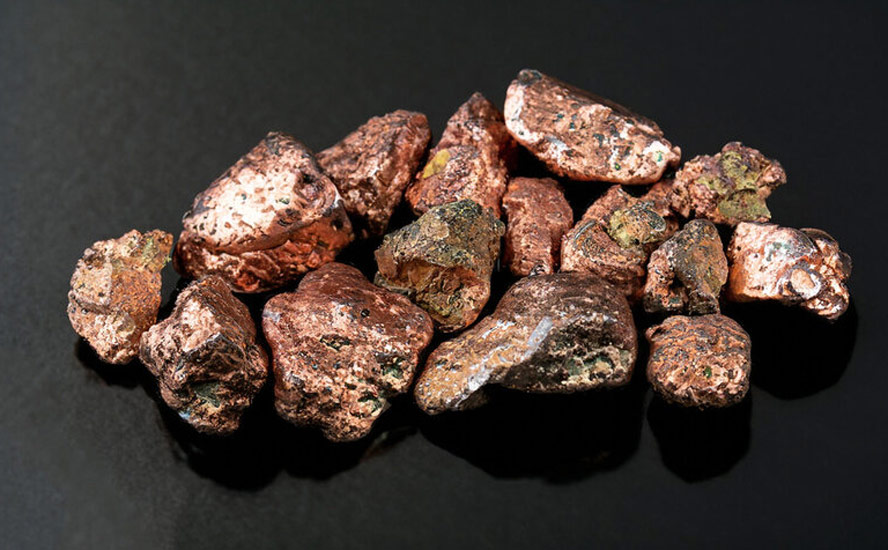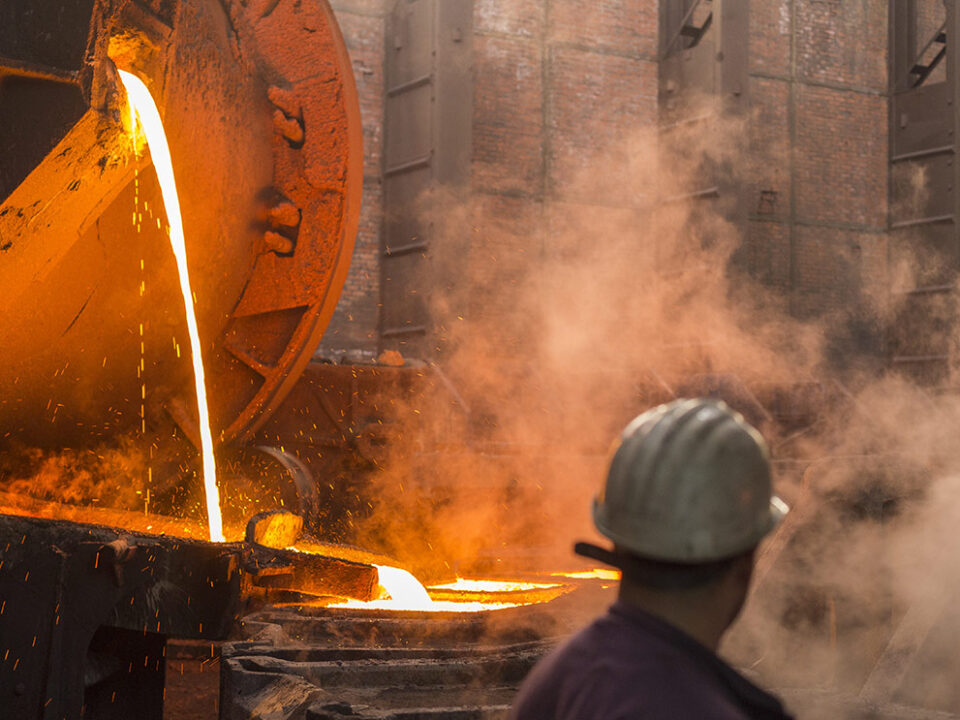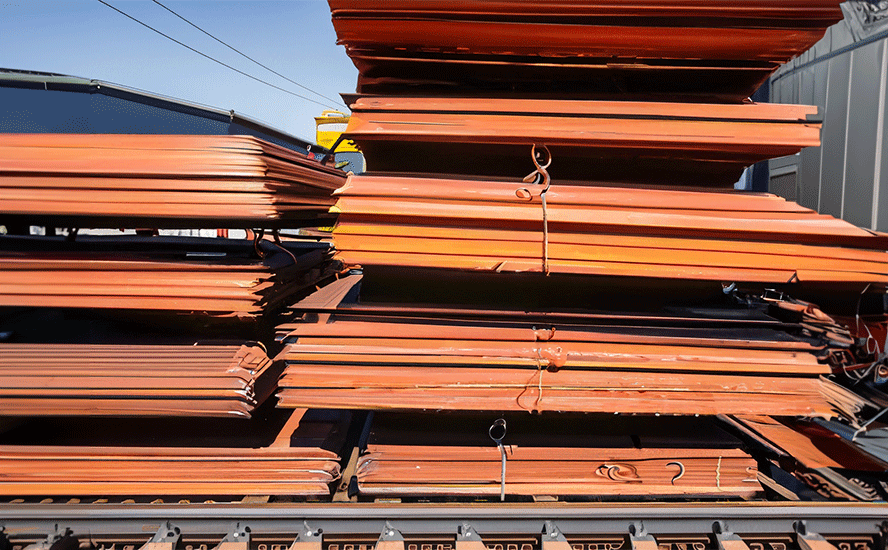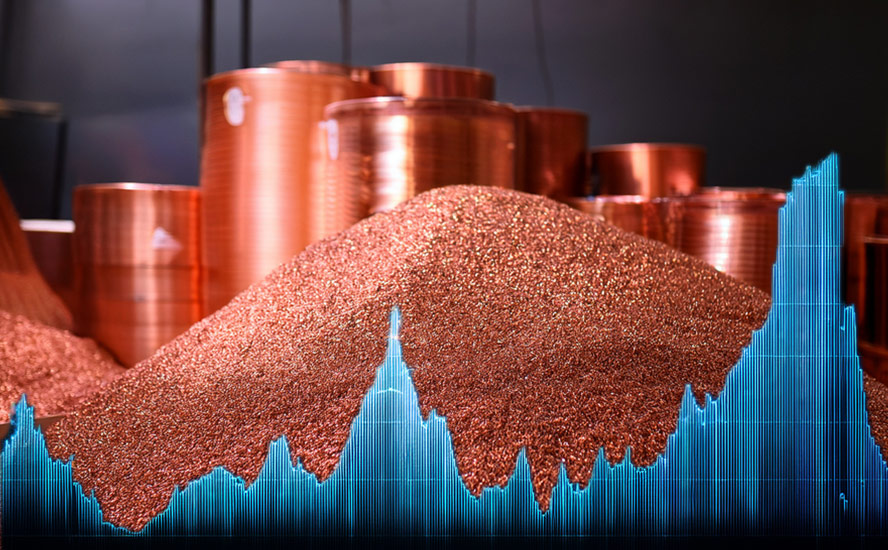Lithium nationalization bombshell – Richard Mills
2023.05.02
As countries gradually recover from the pandemic, substantially better economic growth rates naturally will push the demand for commodities higher. This is one of several factors behind what many believe is a new commodities super-cycle.
The last super-cycle, starting in 2003, was driven by China, which demanded almost every commodity under the sun to meet double-digit annual increases to its GDP. This time is different. I believe we are going to see demand across the board for nearly every type of commodity, based on infrastructure renewal, electrification, reduction of carbon, and food demand.
The fossil-fueled based transportation system needs to be electrified, and the switch must be made from oil, gas, and coal-powered power plants to nuclear energy. If we have any hope of cleaning up the planet, before the point of no return, a massive decarbonization needs to take place.
In a recent report, commodities consultancy Wood Mackenzie said an investment of over $1 trillion will be required in key energy transition metals over the next 15 years, just to meet the growing needs of decarbonization.
A green infrastructure spending push will mean a lot more energy metals will need to be mined, including lithium, nickel, and graphite for EV batteries; copper for electric vehicle wiring and renewable energy projects; silver for solar panels; rare earths for permanent magnets that go into EV motors and wind turbines; and tin for the hundreds of millions of solder points necessary in making the new electrified economy a reality.
Metal supply however will not be able to match this unprecedented level of demand, without the discovery of new mineral deposits from which to mine the metals of the future.
Lithium nationalization
The lithium nationalization bombshell dropped last week by Chile is good news for North American lithium miners, that are likely to become more important as potential suppliers of the white metal needed for making lithium-ion batteries used in electric cars and trucks, as well as energy storage and an array of consumer electronics.
The development could also further pressure electric vehicle makers, who are scrambling to secure lithium supplies.
President Gabriel Boric announced last Thursday that his government would nationalize the country’s lithium industry, with the state planning to partner with companies to enable development of a local industry. According to mining media, state-owned copper company Codelco will initially sign up partners for new contracts, after which a national lithium company will have that responsibility.
As well, Codelco and another state-owned miner, Enami, will be given exploration and extraction contracts in areas where there are now private projects. The two lithium miners already in Chile, SQM and US-based Albemarle, will continue to operate until their contracts expire.
Chile’s long-anticipated announcement comes on the heels of a similar nationalization in Mexico last year. The country also wants to create a regional lithium association with Argentina and Bolivia; the three countries make up the “lithium triangle” where 65% of the world’s known lithium resources are located, and where 29.5% of global production in 2020 was based.
Chile itself represents about 30% of world supply.




The Chilean government projects global demand for lithium will quadruple by 2030 to 1.8 million tonnes, but supply is only expected to reach 1.5Mt, leaving a shortfall.
Nationalization will likely add pressure to electric vehicle carmakers who are hoping to lock in supply before the deficit takes hold and prices skyrocket.
“[T]here may be some hesitation investing in Chile’s lithium space until further details have been released and companies are confident on stability and in how the public-private partnerships will operate,” Jordan Roberts, battery raw materials analyst at Fastmarkets NewGen, told Mining.com in an email.
As share prices of Chilean lithium companies tumbled on Friday, mining magnate Robert Friedland said the announcement would be “quite challenging for international capital, and it makes it harder to invest in Chile.”
“Money is a coward — it runs away at the first sign of trouble,” he quipped.
The Ivanhoe Mines chairman also said Santiago’s move will undermine Chile’s reputation as one of the safer places for foreign investors in Latin America, telling Bloomberg:
It’s “likely to set the government back a long ways – denying companies like Rio Tinto and Teck and BHP to come in there and invest,” Friedland said. “That will not end well, in my estimation.”
Governments are inefficient miners, and it was “much more efficient” to encourage the private sector to invest, he said, adding that “ill-considered” nationalist policies risked derailing the clean energy transition.
Meanwhile, auto industry executives are warning of a supply chain crunch by the middle of the decade, due mostly to plans to spend nearly $1.2 trillion to produce millions of EVs.
According to Benchmark Mineral Intelligence (BMI), to meet demand, the global lithium industry needs to invest up to $42 billion by the end of the decade. This works out to $7 billion each year from now until 2028, helping it to meet predicted demand of 2-4 million tonnes per annum by 2030, which is four times higher than the 600,000 tonnes of lithium that was expected to be produced in 2022.
“Automakers may be more trepidatious around committing to lithium supply deals from Chile until it’s clear what nationalization will look like,” Reuters quotes Caspar Rawles, BMI’s chief data officer. “Most automakers will have been looking for a diversified portfolio of regional supply before this anyway, but perhaps this makes other regions more appealing.”
It only makes sense that if Chile is unable to provide the needed lithium, it could give fresh impetus to finding new sources of the metal.
Reuters notes major carmakers have already been looking for new lithium supplies in the United States, Europe and Africa, giving the example of General Motors investing in Nevada’s Thacker Pass lithium project being developed by Lithium Americas.
Volkswagen too is “looking at a lot of regions,” with the company’s Chief Technology Officer Markus Schaefer telling reporters on Monday that “there are alternatives [to Chile], such as Australia and Canada.”
Canada’s EV supply chain buildout
In fact the German carmaker has already chosen Canada to build its first battery plant outside of Europe, with the site in St. Thomas, ON, to begin production in 2027. Last Friday, Prime Minister Justin Trudeau and Ontario Premier Doug Ford gathered at an old railway building turned museum to lay out plans for the CAD$7 billion plant. Ottawa is investing up to $13 billion in production subsidies once it’s operational, plus another $700 million to help cover capital costs. The Ontario government will kick in $500M.
In December, 2022, the Canadian government and General Motors announced the opening of Canada’s first electric-vehicle manufacturing plant in Ingersoll, Ontario. The plant makes electrified delivery vans and is expected to manufacture 50,000 EVs by 2025.
The provincial and federal governments each invested $259 million towards GM’s $2 billion plan for the Ingersoll plant and to overhaul its Oshawa, ON plant to make it EV-ready, Global news reported.
The next-door province of Quebec has also attracted EV investment. In March, 2021, Lion Electric announced it will build a battery pack manufacturing plant in its home province. The $185 million factory, funded by the Quebec and federal governments who each committed $50 million, will build lithium-ion battery packs capable of electrifying 14,000 medium and heavy-duty vehicles annually.
Canada doesn’t currently produce lithium, but hosts about 2.5% of the world’s lithium deposits. According to Natural Resources Canada, the country has an estimated 2.9 million tonnes of lithium resources, in the measured and indicated category.
Similarly, the US mines and processes only 1% of the world’s lithium, according to the US Geological Survey. However, within its borders are 1 million tons of lithium reserves, ranking it among the top five countries in the world, according to the USGS. In the less certain resources category, the US has 12 million tons, including continental, geothermal and oilfield brines, claystones and pegmatites.
While there is just one lithium mine in operation, Albemarle’s Silver Peak, a lithium brine operation located outside Tonopah, Nevada, many lithium juniors are exploring for the white metal in the Silver State.
In fact last year’s record-high prices have spurred a boom in lithium exploration, which has persisted despite prices retreating.
CBC News quoted a mining executive saying that even though a tonne of battery-grade lithium currently sells for about US$30,000, compared to a November peak of $85,000, production costs are only in the neighborhood of $9-10,000 per tonne, meaning lithium mining is still very profitable for producers — certainly high enough to motivate industry players, big and small, to move forward with new projects.
According to Mining Intelligence data, via Mining.com, there are 409 active lithium projects in Canada, 35% of which are early-stage.
The publication also says Quebec, which hosts some historical production, has by far the most active lithium projects, and accounts for almost half of all lithium exploration projects in the Mining Intelligence database.
Conclusion
Battery and energy metals including nickel, copper and zinc are on a tear due to global infrastructure build-out promises, along with the burgeoning needs of the new green economy.
The world’s top carbon emitters are a long way from aligning their climate goals with the Paris agreement, something that shareholders are demanding, meaning soon they are likely to seek higher amounts of raw materials required for decarbonization and electrification.
Reducing their carbon footprint though, is unachievable without a major push by the mining industry to find and produce more battery- and clean-energy metals.
In our opinion, as the competition for materials needed to go clean and green heats up, prices can only go higher.
Richard (Rick) Mills
aheadoftheherd.com
subscribe to my free newsletter
Legal Notice / Disclaimer
Ahead of the Herd newsletter, aheadoftheherd.com, hereafter known as AOTH.
Please read the entire Disclaimer carefully before you use this website or read the newsletter. If you do not agree to all the AOTH/Richard Mills Disclaimer, do not access/read this website/newsletter/article, or any of its pages. By reading/using this AOTH/Richard Mills website/newsletter/article, and whether you actually read this Disclaimer, you are deemed to have accepted it.
Any AOTH/Richard Mills document is not, and should not be, construed as an offer to sell or the solicitation of an offer to purchase or subscribe for any investment.
AOTH/Richard Mills has based this document on information obtained from sources he believes to be reliable, but which has not been independently verified.
AOTH/Richard Mills makes no guarantee, representation or warranty and accepts no responsibility or liability as to its accuracy or completeness.
Expressions of opinion are those of AOTH/Richard Mills only and are subject to change without notice.
AOTH/Richard Mills assumes no warranty, liability or guarantee for the current relevance, correctness or completeness of any information provided within this Report and will not be held liable for the consequence of reliance upon any opinion or statement contained herein or any omission.
Furthermore, AOTH/Richard Mills assumes no liability for any direct or indirect loss or damage for lost profit, which you may incur as a result of the use and existence of the information provided within this AOTH/Richard Mills Report.
You agree that by reading AOTH/Richard Mills articles, you are acting at your OWN RISK. In no event should AOTH/Richard Mills liable for any direct or indirect trading losses caused by any information contained in AOTH/Richard Mills articles. Information in AOTH/Richard Mills articles is not an offer to sell or a solicitation of an offer to buy any security. AOTH/Richard Mills is not suggesting the transacting of any financial instruments.
Our publications are not a recommendation to buy or sell a security – no information posted on this site is to be considered investment advice or a recommendation to do anything involving finance or money aside from performing your own due diligence and consulting with your personal registered broker/financial advisor.
AOTH/Richard Mills recommends that before investing in any securities, you consult with a professional financial planner or advisor, and that you should conduct a complete and independent investigation before investing in any security after prudent consideration of all pertinent risks. Ahead of the Herd is not a registered broker, dealer, analyst, or advisor. We hold no investment licenses and may not sell, offer to sell, or offer to buy any security.
Legal Notice / Disclaimer
Ahead of the Herd newsletter, aheadoftheherd.com, hereafter known as AOTH.Please read the entire Disclaimer carefully before you use this website or read the newsletter. If you do not agree to all the AOTH/Richard Mills Disclaimer, do not access/read this website/newsletter/article, or any of its pages. By reading/using this AOTH/Richard Mills website/newsletter/article, and whether you actually read this Disclaimer, you are deemed to have accepted it.











